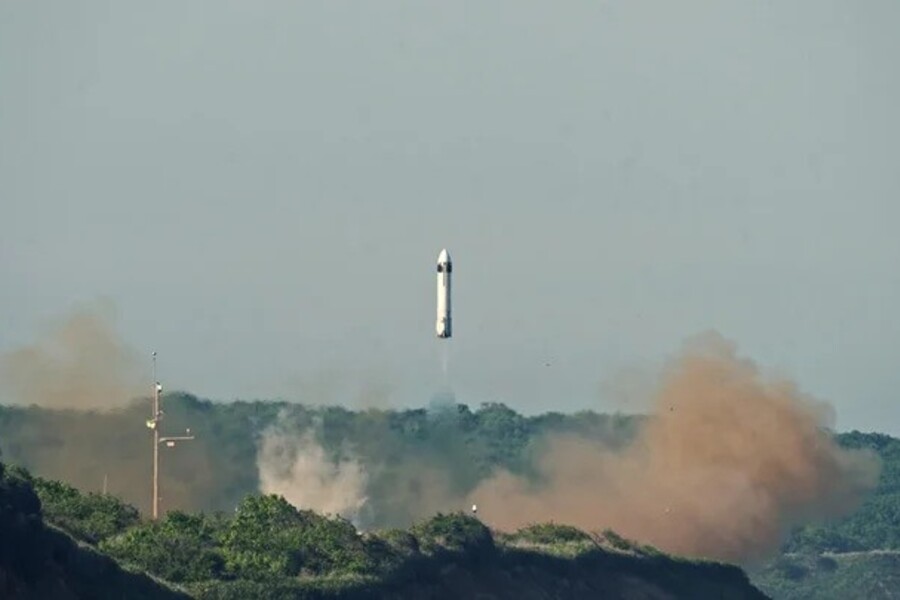In a groundbreaking advancement that marks a new era for one of Japan’s most recognizable brands, Honda Motor Co. has successfully tested a reusable experimental rocket, signaling a bold and deliberate move into the global space industry. The test flight, conducted on the northern Japanese island of Hokkaido, represents Honda’s first successful recovery of a rocket after vertical launch—an achievement that sets the stage for its plans to enable suborbital launches by 2029.
The prototype rocket, standing six meters (approximately 20 feet) tall, reached an altitude of nearly 300 meters (984 feet) before descending to land with extraordinary precision just 37 centimeters (about 14.5 inches) from its designated touchdown point. The test lasted around one minute but packed a powerful message: Honda is serious about space.
This marks a significant milestone not only for the company but for Japan’s private aerospace sector as a whole. It was the first time Honda executed a vertical flight test followed by a soft landing, using a vehicle it hopes will become a cost-effective, reusable tool for launching payloads into suborbital space.
As the space race intensifies across the globe, Honda’s entry comes at a time when private companies are increasingly stepping into roles traditionally held by government agencies. And while Honda has long been known for cars, motorcycles, and robotics, the success of this test suggests it is ready to compete in the aerospace domain using the same blend of innovation, precision, and engineering mastery that has long defined its brand.
Honda’s decision to pursue spaceflight stems from its recognition of a growing global demand for satellite infrastructure. The company explained in its announcement that it envisions a “data system in outer space,” and its reusable rocket technology is being designed to serve that very future, facilitating everything from communication services and GPS coverage to environmental monitoring systems used to track global warming and natural disasters.
Reusable rockets are seen as a cornerstone of next-generation space technology. Unlike traditional expendable rockets, which burn up or crash after use, reusable systems can return to Earth and be relaunched, drastically reducing costs and turnaround times. Honda’s successful test puts it on a path followed by pioneers such as SpaceX, which has revolutionized space access with its Falcon 9 and Falcon Heavy systems.
What makes Honda’s venture especially intriguing is the foundation on which it builds. The company is leveraging its decades of experience in fields such as automated driving systems, robotics, propulsion, and energy management. These technologies are not only applicable but highly valuable in the complex and high-risk environment of rocketry. From real-time control software to precision navigation and structural durability, many of Honda’s existing capabilities are directly transferable to space applications.
In recent years, Honda has expanded its research and development portfolio to include technologies like AI-powered mobility, electric vertical takeoff and landing (eVTOL) aircraft, and renewable energy systems. The reusable rocket program fits neatly into this broader mission, aligning with Honda’s long-term vision to become a mobility company that transcends roads and runways.
Domestically, Honda enters a space landscape that is evolving quickly. Japan’s national space agency, JAXA, continues to develop the H3 rocket, a large and powerful system intended for satellite launches. However, the H3 is not reusable, and setbacks in its development have underscored the need for private-sector innovation.
Startups such as Space One have also tried to claim a share of the market, focusing on small satellite launches. However, Space One’s progress has been stymied by technical failures, including its second consecutive launch failure in late 2024. That creates an opening for a well-funded and technically capable company like Honda to fill a growing demand for reliable, efficient, and cost-effective space launches in Japan and beyond.
Globally, the space industry is witnessing a dramatic transformation. Once the exclusive domain of superpowers and large government agencies, space access is increasingly democratized through private sector innovation. Alongside SpaceX, companies like Blue Origin, Rocket Lab, and China’s iSpace are pushing forward with reusable systems, autonomous launch vehicles, and integrated satellite networks.
Honda’s successful test doesn’t mean it has arrived at that level yet, but it shows potential. The company’s initial goal is to master suborbital flight, which means sending rockets to the edge of space without entering full orbit. These missions are valuable for scientific experiments, microgravity research, and small satellite deployment. They also serve as critical stepping stones to more complex orbital launches, which may become part of Honda’s long-term roadmap.
Shortly, Honda plans to conduct further tests to refine its vehicle’s flight control, structural integrity, and reusability. Each successful iteration will bring it closer to developing a commercially viable launch system. Moreover, as environmental and communication needs continue to grow, so will the demand for agile, affordable access to space—a need that Honda aims to meet with precision and efficiency.
Nevertheless, challenges remain. The aerospace industry is among the most demanding in the world. Technological barriers, regulatory hurdles, and fierce competition await any new entrant. It will require Honda to maintain substantial investments and assemble talent with aerospace-specific expertise while staying agile in an industry where failures are costly and often public.
Yet Honda is no stranger to long-term thinking. The same company that began as a motorcycle manufacturer grew into one of the world’s largest automakers. It entered robotics, developed humanoid robots, and explored hydrogen-powered vehicles long before many of its competitors. Now, it is taking that same pioneering mindset beyond Earth.
If successful, Honda’s reusable rocket program could become more than just an experiment in diversification—it could position the company as a global player in one of the most dynamic and consequential industries of the 21st century. As the world increasingly relies on space for communication, security, and environmental insight, companies like Honda may well become essential providers of the infrastructure that powers the next digital age.
For now, the rocket has landed—and with it, a new chapter begins.
